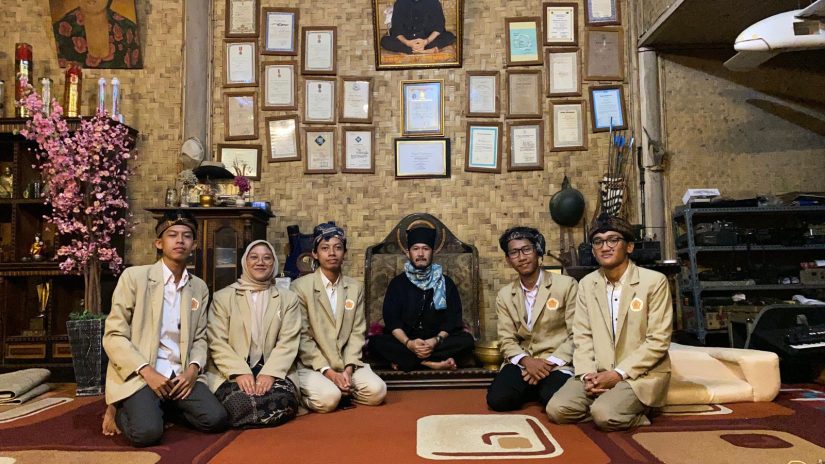
Indigenous communities are often perceived as conservative, isolated groups that view modernity as a threat to their cultural values. However, the opposite is true for the Kasepuhan Ciptagelar community in Sukabumi, West Java. This indigenous group embraces modern technology, integrating it into their lives as a means to preserve and pass down their traditions.
This unique phenomenon inspired a team of UGM students, part of the Student Creativity Program for Social and Humanities Research (PKM-RSH), to conduct field research in the region from June 23 to 30. The team comprised Nanda Ishaqi (Philosophy), Rahardhian Putra Pramana (Government Politics), Ahmad Nilmadza Azmi (Philosophy), Noor Faiz Rasyid (Physics), and Fanisa Ratna Dewi (Philosophy), under the guidance of Dr. Abdul Rokhmat Sairah from the Faculty of Philosophy.
“The ability of the Kasepuhan Ciptagelar community to incorporate modern technology into their daily routines without abandoning their traditional values reflects a dynamic interplay between traditional and modern values,” said Nanda, the team leader.
One of the most notable aspects of the community is their use of modern technology to disseminate cultural values through a local TV station, CIGA TV. The station broadcasts recordings of traditional ceremonies and events, serving as a medium to pass traditions to future generations. Additionally, the community has a Wi-Fi network with a 30 km radius, further showcasing their technological openness.
“Technological tools like CIGA TV are used to convey cultural values and traditions, as the Kasepuhan Ciptagelar community does not rely on written records. They manage their Wi-Fi network and local TV channel independently to benefit the community,” explained Azmi.
The team discovered that the community’s responsiveness to integrating technology can be traced back to the history of Kasepuhan Ciptagelar. The Sirnarasa era in 1980 marked a period when the community began adopting technological advancements to support traditional practices.
“The first major adoption was the use of electric dynamo technology in 1988, followed by a micro-hydro power plant with foreign assistance in 2000. Subsequently, the community introduced FM radio, a local TV station, and Wi-Fi technology,” added Faiz.
The research also explored the community’s guiding principles, such as hirup salaras (living in harmony with nature and the times) and salurus (living in alignment with ancestral teachings). These principles reflect the community’s ethos of adapting to the times while maintaining their cultural integrity.
A key local proverb emphasizes that while people should live in harmony with modern developments, they must not be consumed by them. This philosophy, the students concluded, forms the foundation for harmonizing tradition and modernity, as demonstrated by the integration of local TV broadcasting and internet technology into the life of the Kasepuhan Ciptagelar community.
